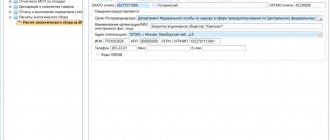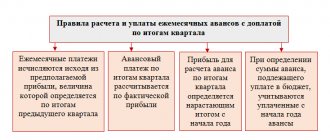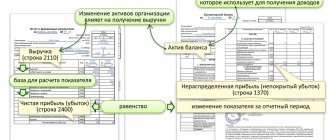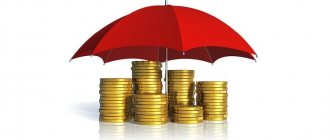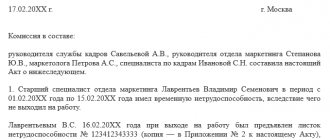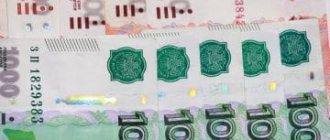What is VAT
VAT is an indirect tax that is paid on the sale of goods, services and property rights. Its payment occurs as follows.
- The factory orders linen to sew a batch of summer dresses. The fabric manufacturer issues an invoice including VAT.
- While seamstresses are making dresses, economists are calculating their cost. They look at how much money is spent on tailoring. The VAT paid for flax is also included in this list, but is recorded as a “tax credit”.
- The dresses are ready and sent to the company store. The calculation of the price tag includes the cost of the goods, the share of profit and the VAT itself.
- When the dresses are sold, the company counts the profit. 20% is deducted from the total amount. The buyer has already paid for them. Then the money goes to the Federal Tax Service.
From the whole situation it is clear that the entrepreneur pays the tax, but the buyer provides it.
Examples of filling in the period code
Period codes in tax reporting usually consist of two digits, the first of which serves as an indicator of belonging to a certain type of report - VAT returns, income taxes, property taxes, etc.
The first digit of the tax period code of the VAT return is 2 (or 5 for the VAT report if the applicant organization is reorganized/liquidated).
The second digit of the period code depends on the quarter number: 1 means the first quarter, 2 means the second quarter, 3 means the third quarter, 4 means the fourth quarter.
That is, period code 21 in the VAT return means that this is a report for the first quarter:
And period code 22 in the VAT return is the report indicator for the second quarter:
The third quarter code is 23, the fourth quarter code is 24.
When filling out the VAT return for the first quarter, the reorganized/liquidated organization will enter the code 51, and for the second quarter - code 52, the third quarter - 53, and the fourth quarter - 54.
If an organization has to submit an updated declaration, the codes in the update are filled in according to the same rules.
What happens if you enter an incorrect period code on the title page - numbers that do not correspond to Appendix No. 3 to the Procedure for filling out a VAT report? How can I fix the detected error?
Basic concepts of VAT
Object of VAT taxation:
- sale of goods, works, services on the territory of Russia, transfer of property rights (the right to claim debt, intellectual rights, lease rights, the right to permanent use of land, etc.), as well as gratuitous transfer of ownership of goods, results of work and provision of services;
- carrying out construction and installation work for own consumption;
- transfer for one’s own needs of goods, works, services, the costs of which are not taken into account when calculating income tax;
- import of goods into the territory of the Russian Federation.
VAT payers
are Russian organizations and individual entrepreneurs, as well as importers and exporters.
Tax rate VAT
can be equal to 0%, 10% and 20%. There are also “settlement rates” equal to 10/110 or 20/120. They are used for operations specified in paragraph 4 of Art. 164 of the Tax Code of the Russian Federation, for example, when receiving an advance payment for goods, work, services.
Tax base for VAT
in the general case, it consists of the cost of goods, works, and services sold, taking into account excise taxes for excisable goods.
Tax period for VAT
- quarter.
Input VAT
— tax paid to suppliers and subject to deduction.
Output VAT
- a tax received from consumers on the sale of goods and services.
What is the tax and reporting period for VAT
The answer to this question is given by Article 163 of the Tax Code of the Russian Federation. According to this article, the VAT tax period is a quarter for all categories of payers. Taxpayers determine the tax to be paid quarterly, since the tax period for VAT is a quarter. This fiscal fee is not determined based on the cumulative total from the beginning of the year.
Payment of value added tax calculated for the quarter is made in three equal payments. Transfers must be made by the 25th of each of the three months following the reporting quarter.
For example, when transferring tax for the 1st quarter in the amount of 300,000 rubles. must be paid:
- 100,000 rub. - until April 25;
- 100,000 rub. - until May 25;
- 100,000 rub. - until June 25.
Taxpayers, in accordance with Article 174 of the Tax Code of the Russian Federation, submit a declaration to the Federal Tax Service upon the expiration of the tax period. Thus, for a given fiscal payment, the reporting period is equal to the tax period.
What is the tax percentage?
The Federal Tax Service applies three tax rates for VAT.
- 0% - applies in cases described in clause 1 of Article 164 of the Tax Code of the Russian Federation. The most common case is the export of goods.
- 10% — food products, goods for children, periodicals, books, medical goods are taxed.
- 20% is the basic VAT rate. Applies in all other cases.
It is important to note that not only goods can be subject to VAT. The tax is paid on imports, construction without a contract and transfer of services and goods for personal use.
The following are exempt from VAT:
- work of government bodies;
- purchase and privatization of municipal and state-owned enterprises;
- investment;
- sale of land plots;
- transfer of money to enterprises operating on a non-commercial basis.
Reasons for refusal to accept VAT for deduction
The main reason for refusal to use the right to deduction is an incorrectly executed invoice. At the same time, it is necessary to pay attention to the fact that errors in the preparation of such a document, which do not create problems for the inspector with identifying the parties to the transaction, the object of taxation, the calculated tax amounts and the VAT rate, are not grounds for refusing to accept them. This norm is prescribed in paragraph 2 of Art. 169 of the Tax Code of the Russian Federation.
See also our material “What errors in filling out an invoice are not critical for VAT deduction?” .
Also, VAT deduction will be denied if:
- there are no primary documents confirming the purchase of goods (works, services);
- goods (work, services) were not accepted for accounting;
- the purchased goods were subsequently used in activities that are not subject to VAT.
In practice, the tax office refuses to deduct VAT in the following cases:
- lack of sales during the tax period in which the right to deduction was claimed;
- using the deduction partially, that is, splitting the amount of tax to be deducted under one invoice into several parts;
- The tax inspectorate is confident that the seller is evading payment of VAT (in this case, the buyer and seller are accused of creating a scheme to illegally reimburse VAT from the budget).
Read about actions that allow you to challenge a refusal to deduct in the material “[LIFEHACK] We defend VAT deductions for “dubious” counterparties.”
For the most frequently identified errors when applying VAT deductions, see the material “[LIFE HACK] How not to reduce VAT payable.”
Let's look at some of these cases in more detail.
VAT deduction in the absence of sales
For a long time, officials believed that the lack of sales (tax base) prevented them from receiving a VAT deduction. However, after some time, the financial department and the Federal Tax Service of Russia changed their position. Thus, officials admitted that the presence of a VAT tax base is not a condition for deduction (see letters from the Ministry of Finance of Russia dated November 19, 2012 No. 03-07-15/148, Federal Tax Service of Russia dated February 28, 2012 No. ED-3-3/ [email protected] ).
Therefore, if the tax office denies you a VAT deduction, you can safely challenge this decision. Note that the courts fully support the taxpayer. For example, the Arbitration Court of the Far Eastern District rejected the tax inspectorate’s argument that in the absence of activities aimed at generating income, the deduction is unlawful. The judges indicated that the Tax Code of the Russian Federation does not contain such a condition for deducting VAT as the presence of sales transactions in the tax period (resolution of the Far Eastern District AS dated November 17, 2014 No. F03-4979/2014, West Siberian District AS dated December 7, 2015 No. F04 -27771/2015 in case No. A46-2573/2015).
Splitting the deduction amount for one invoice into several parts
Since 2015, the question of the possibility or impossibility of splitting the deduction has become irrelevant. The edition of the Tax Code of the Russian Federation, in force since 2015, allows deductions to be made within 3 years from the date of registration of the acquisition (clause 1.1 of Article 172 of the Tax Code of the Russian Federation), in very rare cases limiting it to the full amount (paragraph 3, clause 1, p. 4 Article 172 of the Tax Code of the Russian Federation, letter of the Ministry of Finance of Russia dated December 19, 2017 No. 03-07-11/84699) presented by the tax supplier.
About the possibility of splitting the VAT deduction on fixed assets, read the article “Is VAT deduction on fixed assets allowed in parts?”
How to deduct “import” VAT, read the material “Import” VAT: can it be deducted in parts?”
How is VAT calculated?
You can find many VAT calculators on the Internet. But if you don’t trust algorithms, you can calculate the tax yourself.
VAT calculation
Let's continue the theme of dresses. The factory needs to purchase fabric for 150,000 rubles. To understand how much VAT is from this amount, we use a simple formula:
VAT=X*20/100
It turned out to be 30,000 rubles. But the question is different: is the tax included in these 150,000 rubles or does it have to be paid in excess. The difference is that in the first case the factory will purchase less fabric.
Calculation of the amount including VAT
To calculate the amount including VAT, use the following formula:
Xn = X+X*20/100
It turns out that in order to purchase fabrics worth 150,000 rubles “clean”, the factory will pay 180,000 rubles.
Calculation of the amount excluding VAT
If you need to find out what the amount of fabric purchased without VAT is, you need to apply the following formula:
X = Xn / 1.20
If a factory paid 150,000 rubles for fabric including VAT, then in fact they will bring 125,000 rubles worth of flax to the sewing shop.
How to reduce VAT
There are several legal ways to reduce VAT:
- tax deduction;
- reduced tax rates - 0 and 10%;
- exemption from VAT due to the use of a special regime;
- increasing the share of export sales;
- carrying out non-taxable transactions;
- inclusion of delivery in the cost of goods.
Other schemes may raise suspicion from the tax authorities.
Tax deduction for VAT
The company has the right to reduce the amount of VAT tax charged to it by suppliers. This is called a tax deduction. You can apply for it in the following cases:
- VAT was presented by suppliers for goods, works or services.
- The entrepreneur paid VAT to customs when importing goods from abroad.
- The tax was presented by the sellers of property rights.
An individual entrepreneur or a company claiming a deduction must document the fact of the transaction, the purchase of goods for transactions on which VAT is charged and the registration of goods. Then the transaction will not arouse suspicion from the tax authorities.
Documents for VAT deduction
In order to receive a deduction, you need to prepare a package of documents and send it to your VAT return electronically. The declaration must indicate input and output VAT and the amount of tax payable.
The package of documents includes:
- invoices from suppliers;
- primary documents from suppliers that confirm that the transaction took place - invoices, certificates of completed work, etc.;
- documents confirming the registration of goods, works or services - acceptance certificates, extracts from KUDiR.
Invoices from suppliers must be recorded in the purchase ledger, and invoices issued by yourself must be recorded in the sales ledger.
Then the tax office will check the transaction data. If they do not cause suspicion, nothing more needs to be done. If the inspector has questions, he will require supporting documents. Lack of documents may result in an on-site inspection.
Acceptance of VAT for deduction: some features
First of all, for VAT to be deductible, it does not matter whether payment was made for the purchased goods. This means that the buyer can deduct VAT even with outstanding accounts payable (letter of the Ministry of Finance of Russia dated June 21, 2013 No. 03-07-11/23503, Federal Tax Service of Russia dated September 3, 2010 No. ShS-37-3/10621, resolutions of the Federal Antimonopoly Service Vostochno -Siberian District dated 02.25.2010 No. A74-3115/2009, FAS Central District dated 02.15.2011 in case No. A68-896/10).
As a general rule, from January 1, 2015, VAT is deducted in full on expenses that are normalized for income tax. From the specified date, para. 2 clause 7 art. 171 of the Tax Code of the Russian Federation, according to which VAT was deducted in an amount corresponding to the standard for recognizing expenses for income tax.
If you have access to ConsultantPlus, check whether you have correctly accepted VAT for deduction. If you don't have access, get a free trial of online legal access.
The exception is travel and entertainment expenses. The deduction of VAT on such expenses continues to be standardized (clause 7 of Article 171 of the Tax Code of the Russian Federation).
Value added tax deduction can also be applied in the following cases:
- if the purchased goods were paid for using funds subsidized from municipal (regional) budgets (letter of the Ministry of Finance dated November 2, 2012 No. 03-07-11/475);
- compensation for the costs incurred was made by the insurer (letter of the Ministry of Finance dated July 29, 2010 No. 03-07-11/321);
- at the request of the seller, payment for the goods was made to a third party, if this was specified in the supply agreement (letter of the Ministry of Finance dated November 22, 2011 No. 03-07-11/320).
VAT benefits
There are two options for benefits when a company does not pay VAT - taxation at a 0% rate and tax exemption. The difference is that with a zero rate, you can engage in exports and international air transportation and claim input VAT as a deduction. This means that the taxpayer must still issue invoices, fill out and submit VAT returns. Those who are exempt from paying tax do not file a return and are not entitled to claim deductions.
Some individual entrepreneurs and companies are completely exempt from VAT, others - for certain transactions.
Not required to pay VAT:
- IP on UTII, simplified tax system and PSN;
- participants of the Skolkovo project;
- Individual entrepreneurs and companies are subject to any tax system if their revenue over the last three months is less than 2 million rubles. To obtain such an exemption, you will have to submit additional documents.
Companies on the Unified Agricultural Tax operate under special conditions. From 2022, they pay VAT if they earned more than the established amount in a year:
- 90 million rubles for 2022;
- 80 million rubles for 2022;
- 79 million rubles for 2022, etc.
To receive benefits for the Unified Agricultural Tax, you need to submit documents for exemption. Otherwise, you will have to pay VAT on any income.
Certain transactions are also exempt from VAT:
- cash loans;
- sale of medical goods and services;
- transportation of passengers;
- stock trading.
A complete list of transactions exempt from VAT is contained in Art. 149 of the Tax Code of the Russian Federation.
There is also a benefit for exempting sales from VAT for Russian IT companies. In order to take advantage of the benefit, developers must include their software in the register of Russian computer programs.
When benefits don't apply
When importing goods.
If an individual entrepreneur imports goods from abroad using a special regime, he will have to pay VAT.
If an invoice is issued with VAT.
Special regime officers can, at the client’s request, issue him an invoice including VAT. But then the individual entrepreneur will have to file a declaration at the end of the quarter and pay this tax to the budget.
Codes of tax periods according to the simplified tax system
According to Order of the Federal Tax Service of Russia dated February 26, 2016 N ММВ-7-3/ [email protected]
| Code | Name of period |
| 34 | Calendar year |
| 50 | The last tax period upon reorganization (liquidation) of the organization, as well as upon termination of activities as an individual entrepreneur |
| 95 | Last tax period when switching to a different taxation regime |
| 96 | Last tax period upon termination of business activity (including in respect of which the taxpayer applied a simplified taxation system) |


